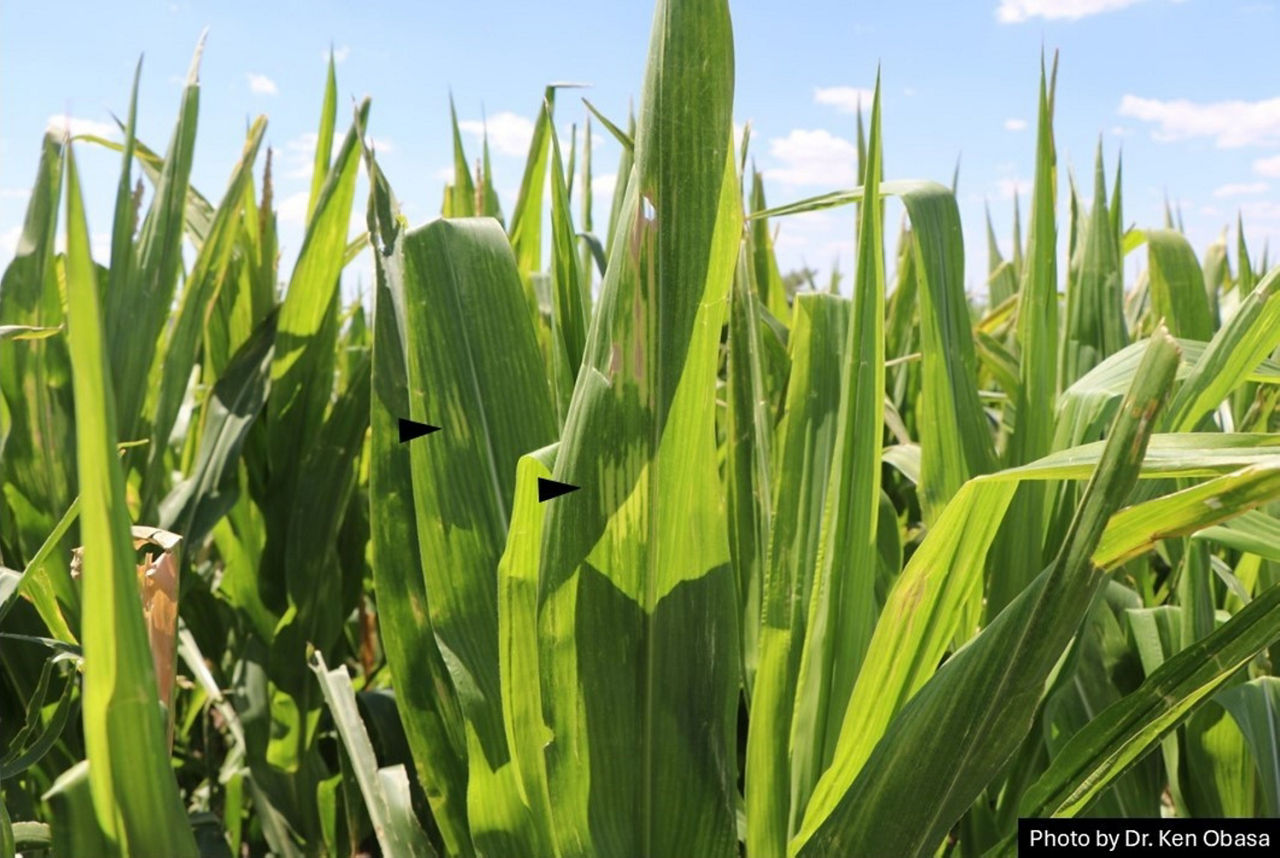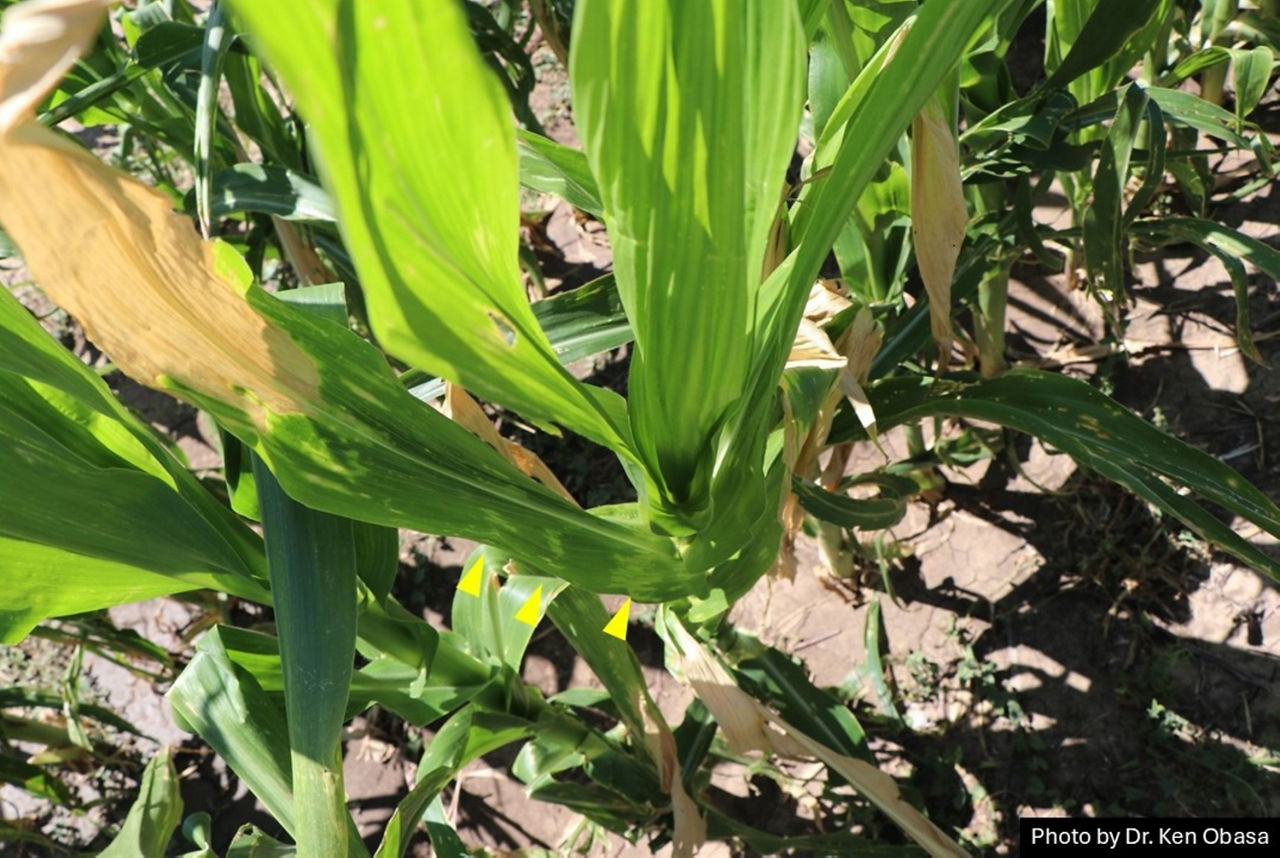Late-Season Decline of Corn
December 8, 2024
- Disease mimics drought stress with stunting, leaf streaking, and poorly developed ears.
- Early phase symptoms are not pronounced but can lead to stunting and delayed tasseling.
- Leaf necrosis, poor pollination, reduced kernel set, stunted plants, and stalk rot are characteristics of late phase infection.
In 2020 and 2021 a rapid decline in the plant health of corn was observed in the Texas High Plains area and in 2022, similar symptoms were identified in the Texas Panhandle.1,2 Laboratory analysis identified the symptoms to be caused by two species of bacteria closely related to Pantoea ananatis.1,2 Because of the reoccurrence, the symptoms have been reported as part of a new corn disease designated as Late-Season Decline (LSD).1,2 Additional research is needed to fully understand the two bacterial pathogens and their impact on corn plants along with their interaction with other corn disease pathogens.
Disease symptoms mimic drought stress with stunting, leaf streaking, and poorly developed ears. Subsequent evaluations found LSD to have early and late infection phases. Symptoms of the early phase are not pronounced which can lead to a false impression that the symptoms are not a serious concern. Infection during the vegetative growth stages leads to light green, elongated, slightly translucent, and non-chlorotic and non-wavy streaks on the leaves (Figure 1). Water-soaked margins around the lesions can be observed when leaves are wet. Despite the innocuous visual symptoms, infection during this phase can lead to stunting and delayed tasseling.1,2

During late vegetative growth stages, the disease progresses, and the symptoms become more dramatic and severe. The foliar lesions enlarge, coalesce, become necrotic (brown), and expand from leaf tip to the leaf base (Figure 2). Plants appear drought stressed, and stalk rot may develop. Tassels may turn brown prematurely which reduces the availability of pollen. Reduced pollen shed can result in poor ear fill and kernels that do develop may appear swollen.1,2 Depending on time of infection, severity of infection, associated lodging, environmental conditions, and other agronomic factors (other diseases, insects, fertility, etc.) yield potential may be slightly or dramatically reduced.1 Losses of up to 93% have been observed.2

Genetic resistance or tolerance is the best means of managing bacterial diseases. However, at this time, sources of resistance in corn are unavailable or not reported. Information about how the disease is transmitted and the bacterial pathogen itself is limited; therefore, being aware of the disease potential and scouting are the best current approaches for managing a suspected infection. Harvesting early or cutting for silage may be considerations. Suspected LSD infection samples should be sent to a diagnostic laboratory for analysis and identification.1
Sources
1Obasa, K. 2024. Late-season decline disease of corn. PLPM PU-107. Texas A&M AgriLife Extension. Texas A&M University. https://cdn-de.agrilife.org/extension/departments/plpm/plpm-pu-107/publications/files/late-season-decline-disease-of-corn.pdf
2Obasa, K., Kolomiets, M., Reed, B., Coker, D., Bell, J., and Heflin, K. 2023. Late-season decline: a new bacterial disease of corn identified in the Texas Panhandle. Plant Health Progress. APS Publications. https://apsjournals.apsnet.org/doi/10.1094/PHP-10-22-0106-RS
Web sources verified 8/26/24. 1211_448425